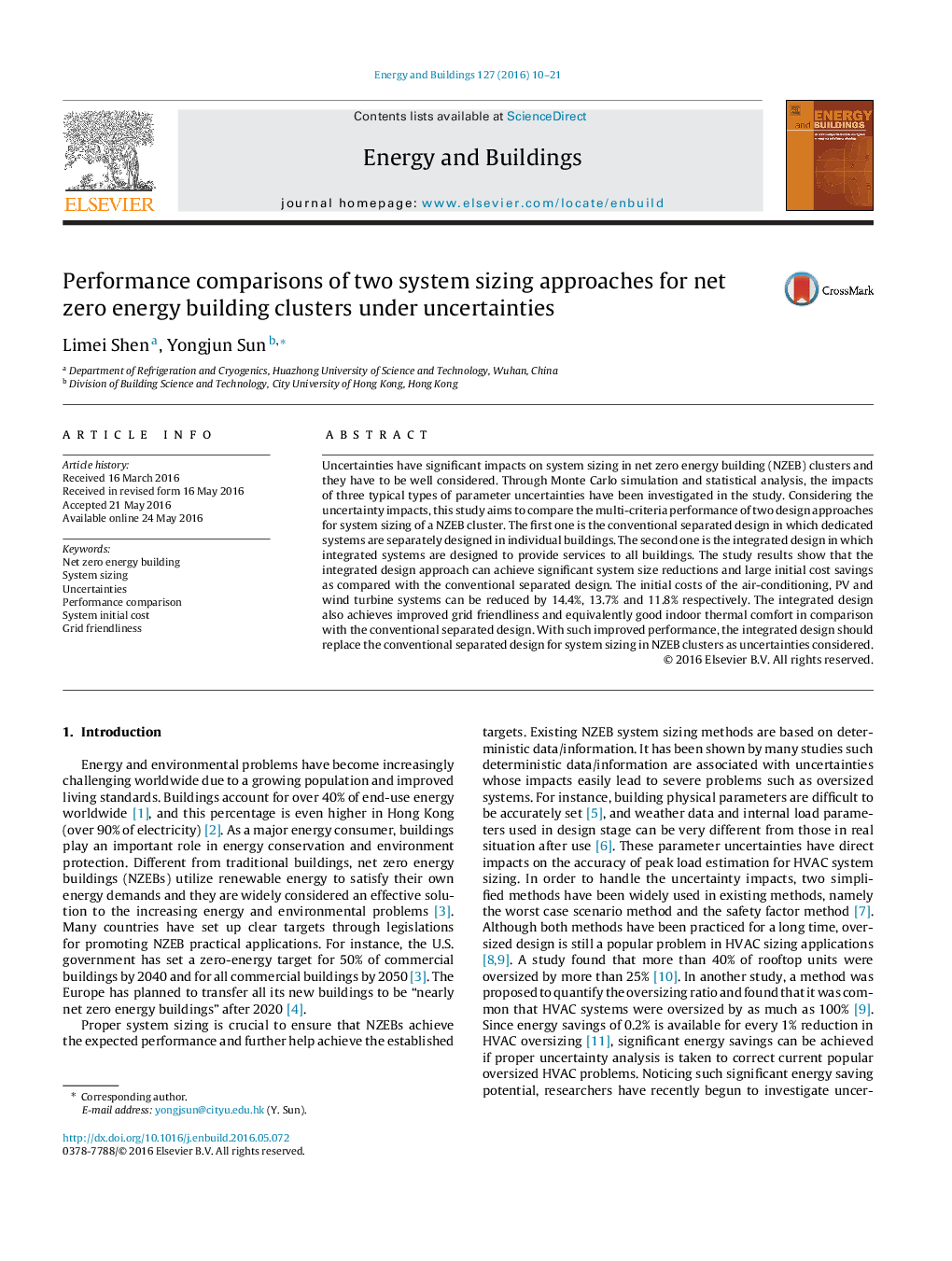| Article ID | Journal | Published Year | Pages | File Type |
|---|---|---|---|---|
| 261960 | Energy and Buildings | 2016 | 12 Pages |
•Performance of two system sizing approaches for NZEB clusters was compared.•Uncertainty impacts were investigated via Monte Carlo simulation.•The integrated design achieved better performance in multi-criteria.
Uncertainties have significant impacts on system sizing in net zero energy building (NZEB) clusters and they have to be well considered. Through Monte Carlo simulation and statistical analysis, the impacts of three typical types of parameter uncertainties have been investigated in the study. Considering the uncertainty impacts, this study aims to compare the multi-criteria performance of two design approaches for system sizing of a NZEB cluster. The first one is the conventional separated design in which dedicated systems are separately designed in individual buildings. The second one is the integrated design in which integrated systems are designed to provide services to all buildings. The study results show that the integrated design approach can achieve significant system size reductions and large initial cost savings as compared with the conventional separated design. The initial costs of the air-conditioning, PV and wind turbine systems can be reduced by 14.4%, 13.7% and 11.8% respectively. The integrated design also achieves improved grid friendliness and equivalently good indoor thermal comfort in comparison with the conventional separated design. With such improved performance, the integrated design should replace the conventional separated design for system sizing in NZEB clusters as uncertainties considered.
